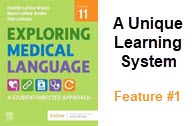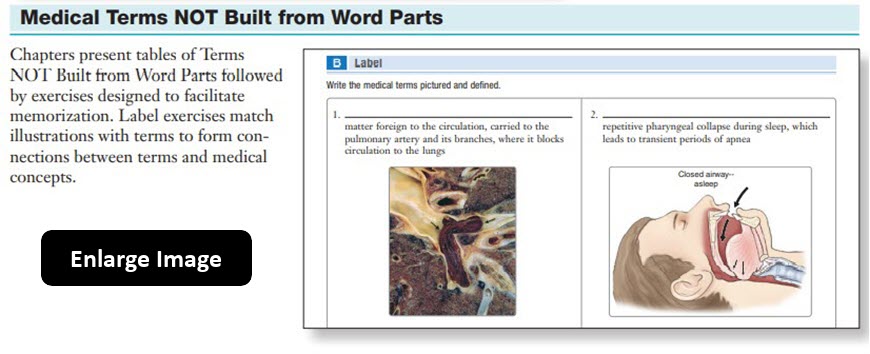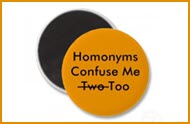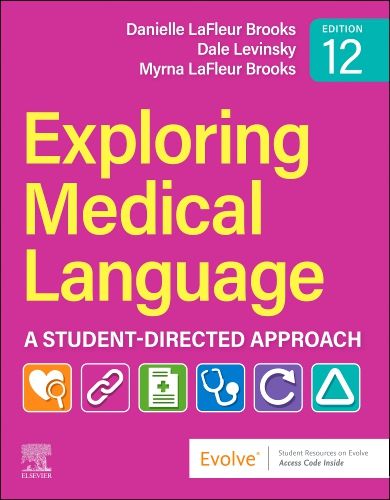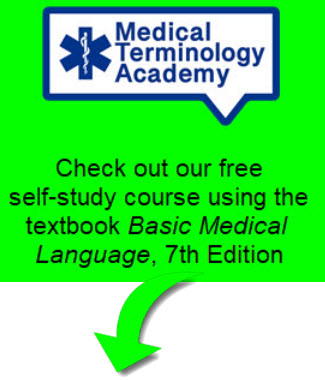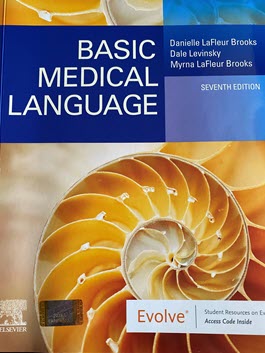Key Feature # 1: Unique Learning System
Welcome to the first in a series of posts to ‘explore’ the key features of the NEW version of Exploring Medical Language, the 11th Edition.
We begin by highlighting its unique learning system. What makes the system unique is the division of medical terms into two categories: those built from word parts and those not, each with its own dynamic and individualized set of learning activities.
Gone is the need to memorize long complicated words such as otorhinolaryngology.
Let’s look at the learning system in action!
Terms Built from Word Parts
First, students learn word parts.
An example of a textbook exercise for learning word parts.
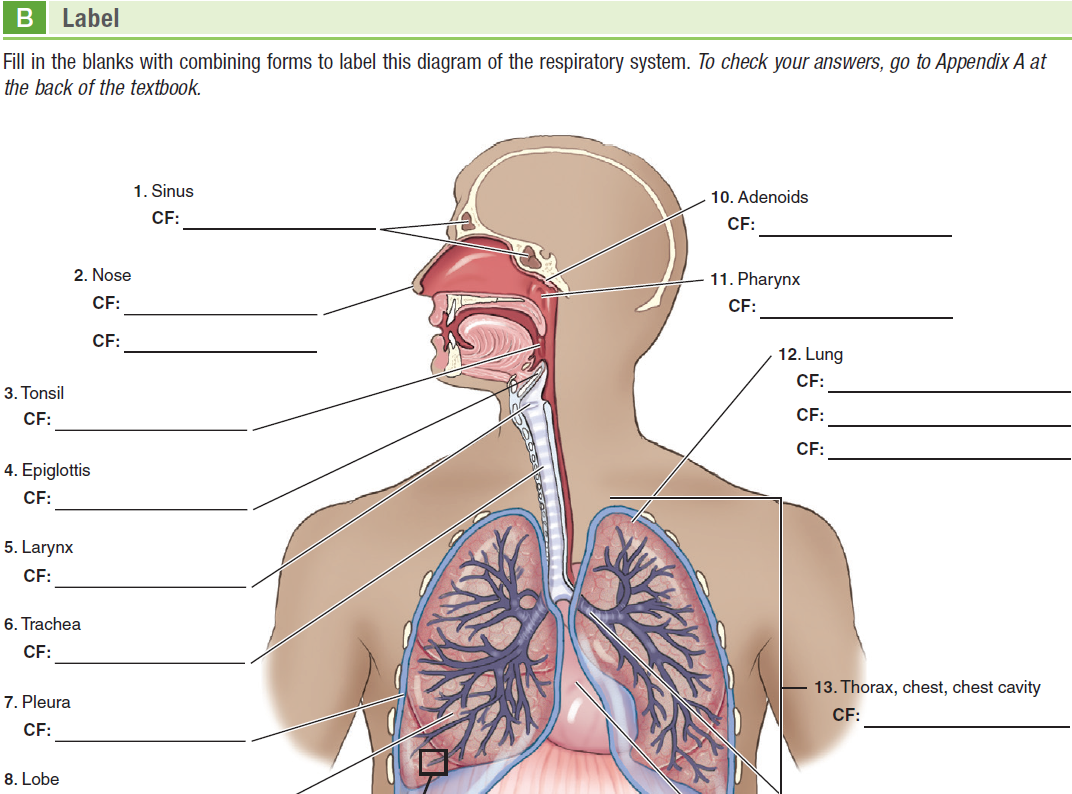
Second, students apply their knowledge of words parts to learn medical terms built from them. Terms included in this category can literally be translated to find their meaning.
Terms NOT Built from Word Parts
Since not all medical terms are built from word parts this category is for them. Although they may contain some word parts, these terms can not be easily translated to find their meaning.
An example of a textbook exercise for learning terms NOT built from word parts.
M
Using The Learning System
Recently a family member was diagnosed with anaplasmosis. This was a new term for me and it did not easily fall from my lips. However, breaking it into word parts helped me remember it and pronounce it.
Ana/plasm/osis is made up of ana, a prefix which means excessive; plasm, a word root which means plasma; and osis, a suffix meaning abnormal.
Since anaplasmosis cannot be literally translated to find its meaning this term fits into the Terms NOT Build from Word Parts category. However, most terms in this category are not exclusively made up of word parts. Most contain English terms as in Lyme disease.
Introducing students to the language of medicine by the division of terms into the two categories with their own learning activities takes much of the mystery out of medical terminology. Thus, students come to love the language of medicine and continue to build their vocabularies long after they have completed their course.
Learn more about Exploring Medical Language, 11th Edition
Related Blog Posts
New! Exploring Medical Language, 11th Edition
A Career Teaching Medical Terminology
Read Other Faculty Tips >

